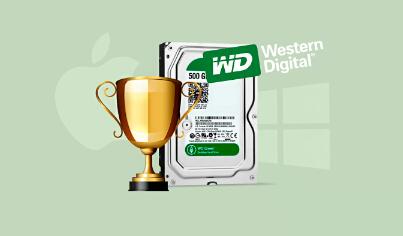Western Digital (WD) is a well known name in the data storage industry, offering a wide range of hard drives, solid state drives (SSDs), and external storage solutions. Despite their reliability, data loss can occur due to various reasons such as accidental deletion, hardware failure, or corruption. When faced with such issues, Western Digital file recovery software becomes essential in retrieving lost or inaccessible files.
Types of File Recovery Software for Western Digital Drives
Western Digital file recovery software can be categorized into several types based on functionality and ease of use:
WD’s Proprietary Recovery Tools: Western Digital provides its own set of tools for data recovery, designed specifically for their drives.
Third-Party Recovery Software: There are numerous third-party solutions that support WD drives, offering advanced features and broader compatibility.
Professional Data Recovery Services: For severe data loss situations, professional services can provide specialized hardware and software solutions.
Features of Western Digital File Recovery Software

1. Ease of Use
Most WD file recovery software is designed with user-friendliness in mind. Intuitive interfaces and step-by-step wizards guide users through the recovery process, making it accessible even for those with minimal technical knowledge.
2. Compatibility
WD recovery software is often compatible with various operating systems, including Windows, macOS, and sometimes Linux. Ensuring compatibility with your operating system is crucial for a smooth recovery process.
3. Support for Various File Systems
Western Digital drives may use different file systems, such as NTFS, FAT32. exFAT, and HFS+. Effective recovery software should support a range of file systems to handle various types of drives and partitions.
4. Advanced Scanning Options
To recover lost files, the software typically offers quick and deep scanning options. Quick scans look for deleted files in the file system, while deep scans search the entire drive sector by sector, which is useful for recovering data from formatted or corrupted drives.
5. Preview and Selective Recovery
A useful feature is the ability to preview recoverable files before performing the actual recovery. This allows users to selectively recover only the files they need, saving time and storage space.
6. Recovery from Various Scenarios
Effective recovery software can handle various data loss scenarios, including accidental deletion, formatting, corruption, virus attacks, and physical damage.
Recommended Western Digital File Recovery Software
1. WD Data Lifeguard Diagnostic
WD Data Lifeguard Diagnostic is a proprietary tool provided by Western Digital for diagnosing and testing their drives. While it’s primarily used for diagnosing drive issues, it can be helpful in identifying problems that may lead to data loss.
2. WD Backup Software
WD Backup Software is designed to create backups of important files. While not a recovery tool per se, having regular backups can prevent data loss and simplify the recovery process if needed.
3. Recuva
Recuva is a popular third-party file recovery tool known for its ease of use and effectiveness. It supports various file systems and can recover files from WD drives. It offers both a free version and a professional version with advanced features.
4. EaseUS Data Recovery Wizard
EaseUS Data Recovery Wizard is another powerful recovery tool that supports WD drives. It offers advanced scanning options, a user-friendly interface, and supports a wide range of file types and systems. It is available in both free and paid versions.
5. Disk Drill
Disk Drill provides comprehensive file recovery solutions with support for WD drives. It includes features like data protection, quick and deep scanning, and file preview. The software is available for both Windows and macOS.
How to Use Western Digital File Recovery Software
1. Download and Install the Software
First, download the file recovery software from the official website or a reputable source. Install the software on a different drive than the one you are recovering data from to avoid overwriting any recoverable files.
2. Connect Your WD Drive
Connect your Western Digital drive to your computer. Ensure that it is recognized by the operating system before launching the recovery software.
3. Run a Scan
Open the recovery software and select the WD drive you wish to scan. Choose between a quick scan and a deep scan based on your situation. Quick scans are faster and suitable for recently deleted files, while deep scans are more thorough and can recover files from formatted or damaged drives.
4. Preview and Select Files
After the scan is complete, the software will display a list of recoverable files. Use the preview function to check the files before recovery. Select the files you want to recover.
5. Recover and Save Files
Choose a recovery location that is different from the original drive to avoid overwriting. Save the recovered files to this new location. Verify that all the important files are intact and accessible.
Best Practices for Data Recovery
Stop Using the Drive: If you suspect data loss, stop using the affected drive immediately to prevent overwriting data.
Regular Backups: Implement a regular backup strategy to avoid data loss. Use WD Backup Software or other backup solutions.
Use Reliable Software: Choose reputable file recovery software to ensure the best chances of successful recovery.
Seek Professional Help: If the data is critical and the recovery software is unable to retrieve it, consider seeking help from professional data recovery services.
About us and this blog
Panda Assistant is built on the latest data recovery algorithms, ensuring that no file is too damaged, too lost, or too corrupted to be recovered.
Request a free quote
We believe that data recovery shouldn’t be a daunting task. That’s why we’ve designed Panda Assistant to be as easy to use as it is powerful. With a few clicks, you can initiate a scan, preview recoverable files, and restore your data all within a matter of minutes.
Subscribe to our newsletter!
More from our blog
See all postsRecent Posts
- How to recover lost files on flash drive? 2024-12-26
- What can messed up flash drive cybersecurity? 2024-12-26
- My flash drive isn’t working on adaptor mac 2024-12-26










